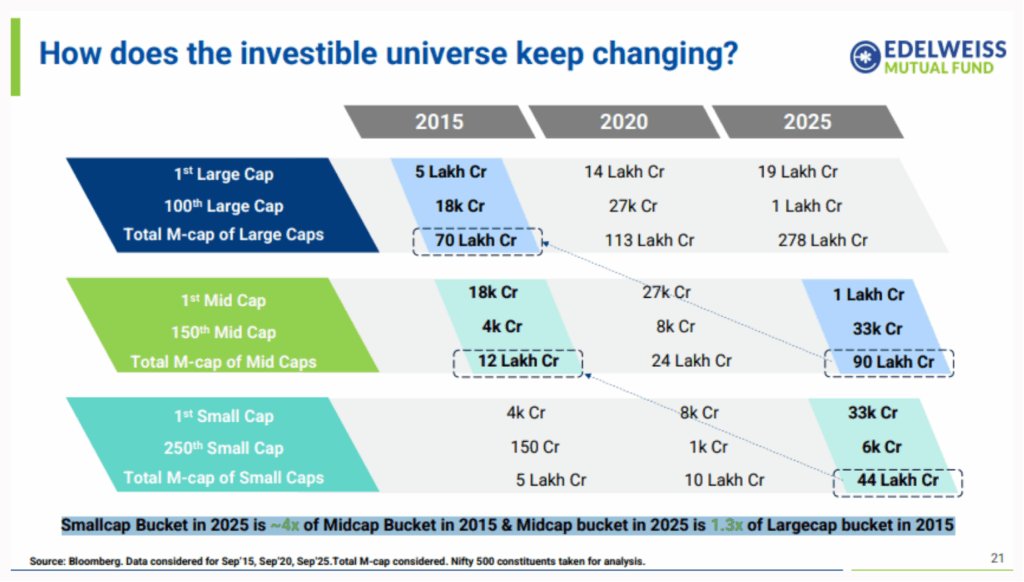A Decade of Massive Market Growth
In the last ten years, India’s stock market has seen a big change. Back in 2015, the total market cap of large-cap companies was around ₹70 lakh crore. (see the image below)

Mid-cap companies stood at ₹12 lakh crore, while small-cap companies were just ₹5 lakh crore. By 2025, the large-cap segment alone has jumped to about ₹278 lakh crore — almost four times bigger. The mid-cap market cap has grown more than seven times, and the small-cap space nearly nine times. Clearly, small-caps have shown the fastest growth, followed by mid-caps and large-caps.
The Changing Scale of Companies
The definition of small, mid, and large-cap has changed a lot. In 2015, the smallest mid-cap company was valued at around ₹4,000 crore. Today, that same size would be called a small-cap. The smallest mid-cap now starts at about ₹33,000 crore, while small-caps in the top 250–300 list are roughly ₹6,000 crore. This shows how the market has expanded and how company values have moved to a new level.
Are Market Categories Still Relevant?
With this kind of growth, it’s fair to ask if these categories still make sense. As companies grow and their market value rises, they move from small to mid, and mid to large. But this creates a challenge for fund managers, especially those running small-cap or mid-cap funds, because they must remove growing stocks once they cross the category limits.
The Importance of Staying Invested
Some stocks rise from the bottom and turn into giants. Selling them too early just because of a category rule can make investors lose out on their full journey. That’s why it’s important to have a balanced portfolio across large, mid, and small-cap stocks. Staying invested across all levels helps investors capture the growth potential of strong companies.
The Power of Long-Term Growth
The data shows that in the last decade, even simple investments across these three categories would have given four to nine times returns. This proves that India’s market has rewarded long-term investors. While strategies and timing can help, sometimes just following the market’s natural growth is enough. As the market continues to grow, this strong growth story may keep going in the years ahead.










